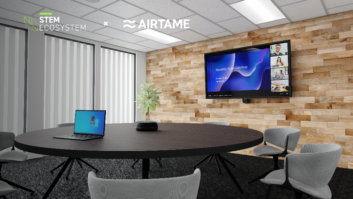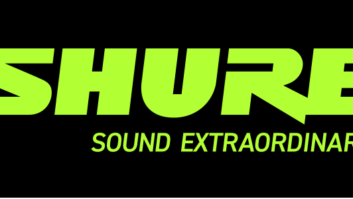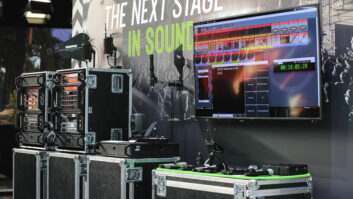 What was the vision behind the creation of Stem?
What was the vision behind the creation of Stem?
The seeds of Stem were planted by the realisation that there was something missing in the audio conferencing industry. We started by looking at the technology people use in their day-to-day life and how they use it. We found that the simplicity and intuitiveness of consumer devices was not present in solutions for conference rooms.
Instead of gathering a group of engineers to explore what the next best speakerphone is, we went on a global tour to ask everyday users, IT professionals, consultants, designers and architects what was missing in current solutions. After surveying thousands of individuals, we identified six common pain points that Stem needed to solve for our customers.
We also quickly realised the impossibility of delivering a single device that could solve all these problems. That was how the Stem Ecosystem was born, created from identifying solutions for common customer problems, bringing a simplistic and robust solution for conference rooms that customers can deploy and use without any required training.
Stem was acquired in 2020 by Shure. What are some of the developments you have seen over the past 12 months?
On the surface, customers see the Shure & Stem websites integration and Shure branding on the Stem software. The Stem Ecosystem is also fully integrated into Shure’s systems portfolio, and it is available to our channel partners alongside other product lines such as the Microflex Ecosystem.
From an operational perspective, the fresh energy and agility of Stem, combined with Shure’s knowledge on performance and quality, is having a very positive impact on the customer experience.
In recent firmware updates, we improved sound performance and reliability for customer products already in the field. In following updates, we will continue to fine-tune performance and add new features that give customers more value. We will continue to put the customer first, and act on their needs and feedback.
Now that Shure and Stem Audio are fully integrated, what are the new benefits that the Stem Ecosystem can offer?
As part of the Shure product line, the Stem Ecosystem is available globally on Shure RDCs and via resellers. This means better availability and faster delivery and service for our customers.
Additionally, the regional Shure sales and support teams around the world are now a point of contact for customers and provide the great service that Shure is known for, to Stem customers in their own language and time zone.
How is Stem Ecosystem different compared to Microflex Ecosystem?
The Stem Ecosystem empowers in-house IT/AV teams with a solution that they can effortlessly deploy on their own, leveraging knowledge and experience they already have. The Stem ecosystem devices can be mixed and matched as needed to enable high quality conferencing in any room, no matter the shape, size, or configuration. For large-scale deployments, enterprise customers often leverage the service of retailers or integrators.
The Microflex Ecosystem is deployed through Shure systems integrators who have been certified on the products and can install, configure, tune, and service the system as well as integrate with third party devices such as control systems.
It is possible that both systems may be deployed to very similar rooms, but the difference would be what path or distribution channel they followed to get there.
Has the relationship had an impact on R&D and new product development?
Yes, post integration is now just one R&D team working together. The Stem product line audio components have been tested and tuned in certified acoustic labs in Shure’s corporate headquarters in Niles. This is yielding acoustical improvements on the products that we have been able to deploy to all Stem devices via firmware updates.
Also, our software validation process applied to Stem firmware and software releases ensures the highest level of reliability and success for customers when updating firmware and using our software on any platform.
These are just two examples of how parts of the Shure quality process have benefited Stem products already, with more to come in the future.
How is Stem Ecosystem approaching the evolving ‘new office environment’?
The flexibility of the Stem Ecosystem fits really well with the evolving needs around creating flexible meeting spaces. Even after being deployed, the system easily accommodates changes in workspaces, providing the customer with options to expand, repurpose, or remove audio devices without any need to re-program or recalibrate the system.
We care about enabling customers to create meeting spaces where they do not even have to think about the audio because it just works, regardless of the environment.
How does Stem Ecosystem collaborate and connect with other platforms to streamline the communication process?
During our global customer research tour, platform connectivity and compatibility were identified as key customer pain points, when a simple, universal connection like USB was preferred. Every Stem solution offers USB connection right on the device for direct and simple interface with soft codecs and hardware codecs that feature USB. We also offer analog and Dante connectivity for those corner cases that require something other than USB.
Furthermore, Our USB interface supports the standard for human interface device (USB-HID) to allow the Stem audio devices to display and control key functions on the Codecs such as Mute and Volume.
What are the key factors to consider when selecting one product from the Stem Ecosystem?
Given the versatility and universal compatibility of the Stem products, the customer just has to worry about where in the space they would like to place the components. Some customers prefer to keep the table clear and place our audio devices in the ceiling or on the front wall. Others prefer to have controls at arm’s reach and place devices on the conference room table.
While every Stem audio device can work standalone, the power of the Stem Ecosystem really comes from mixing and matching them to create a customised system that fits the needs of the customer’s space. Customers can design their room using our online RoomDesign tool to virtually design their room, add products, and even verify coverage before they buy anything.
Any other future partnerships that can be discussed?
The Stem Ecosystem was designed from the ground up to work well and interface with all conferencing platforms, and we will continue to look for opportunities to expand and enhance that experience in the future.






